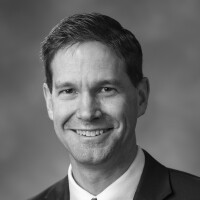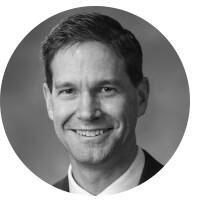When we talk about biblical garments, studying them in light of Mormon temple garments is very interesting. You’ll notice at the end of chapter 28, it tells you in verse 41, “You’re gonna take these garments, and you shall put them upon Aaron thy brother and his sons with him and shall anoint them and consecrate them and sanctify them that they may minister unto me in the priest’s office.”
Keep in mind we’ve mentioned this before, but back in this day, there’s only one of the 13 tribes because remember we took Joseph and replaced him with Ephraim and Manasseh. So now we have 13 tribes, but we always pull Levi out of that number. Not always, but usually, he gets excluded from the number because his is the tribe that has the priesthood. None of the other tribes are able to perform any priestly functions; they don’t have that authority.
Now we live in a day when it’s given to all people who are willing to make and keep these covenants, a kingdom of priests and priestesses. That’s exactly what’s happening then in chapter 29. It tells you in verse 4 that Aaron and his sons are going to be brought to the door of the tabernacle of the congregation, and there you’re going to wash them with water. You’ll notice when that passage occurs that Moses is supposed to bring Aaron and his sons to the door of the tabernacle, probably not the outer courtyard, probably here. Why? Because you have the laver with water, and on the backside of the labor, tradition holds that you’ve got a horn, a ram’s horn that is filled with oil. So you first wash Aaron and his sons with water.
Verse 5: “And thou shalt take the garments and put upon Aaron the coat and the robe and the ephod and the ephod and the breastplate and gird them with the curious girdle.” And then verse 7: “Thou shalt take the anointing oil and pour it upon his head and anoint him.” So you take the oil here; now you’ve anointed him. So he has been washed, he’s put on clothing of this priesthood office that he holds, and now you’ve anointed him. Of course, after the washing and anointing, the next step is to be clothed. And a parallel to this is seen in the temple with the Mormon temple garments.
The word “anoint” in Hebrew is one of the most significant words we can cover this whole Old Testament year. If you translate it into English, “mashiach” becomes “messiah”; translate into Greek becomes “christos” or in English, “christ.” So it means the anointed one. Now we know that there’s one anointed that we all worship, that is Jesus, the anointed Jesus, the Messiah. But it’s interesting when we go to the temple, we get to be anointed. Now we’re not Christ (capital C) or capital M Messiah, but He wants us to be like Him. And so we take that holy anointing oil and take it upon ourselves.
Now we’ve taught this in other lessons, that oil, olive oil particularly, is this amazing symbol of the atonement of Jesus Christ. It turns out when you actually press olive oil really, really hard in those presses, it actually oozes out of the pores of olives, blood red. Eventually, it coalesces into vats and is golden as we typically see it, but initially, it’s blood red. It literally looks like blood’s pouring over rocks. So this amazing symbol that oil is a form of covering ourselves symbolically in the atonement of Jesus Christ, His blood which heals us physically and spiritually. And that’s kind of the reminder here is that when you are going into the presence of God, you need the liveliness and the power, the vivifying force of His blood to be with you to be in His presence.
And, by the way, isn’t it a remarkable thing that He offers to us in this context to not just come to the temple and maybe see other people experiencing these things we’re talking about from the Old Testament, but He invites everyone—man, woman, black, white, bond, free, it doesn’t matter—all are alike unto God when you come into the temple and put on the holy Mormon garment. And all are washed, and clothed, and anointed. And then once you’ve done that for yourself, what an amazing opportunity that the Lord gives us to say, where He says basically, “I want you to become a little bit more like me. I want you to become a savior on Mount Zion.” That doesn’t mean that we save these people on the other side of the veil; it means we work hand in hand with the Messiah, the one and only, ultimately infinitely anointed one, as a little anointed one that Taylor’s been talking about to help bring His salvation to all of these people who are in desperate need of His grace. I love the symbolism there.

By Dr. Tyler Griffin, Source Expert
Dr. Tyler Griffin embarked on his professional journey by teaching seminary courses for a period of six years in Brigham City, Utah. Following that, he dedicated the subsequent seven years to instructing at the Logan LDS Institute, located adjacent to Utah State University. Alongside his participation in the Seminary Preservice program, he spearheaded and supervised the implementation of the online seminary program. Dr. Griffin has been an educator at BYU for well over a decade and holds a co-founding position within the BYU Virtual Scriptures Group. His undergraduate degree is in Electrical Engineering, while both his master’s and doctorate degrees center around Instructional Technology. Dr. Griffin is the exclusive author of “When Heaven Appears Distant” co-author of “Come Unto Me: Illuminating the Savior’s Life, Mission, Parables, and Miracles” and co-editor of “Millions Shall Rediscover Brother Joseph.”

Fact Checked by Mr. Kevin Prince, Source Expert
Kevin Prince is a religious scholar and host of the Gospel Learning Youtube channel. His channel has garnered over 41,000 subscribers and accumulated over 4.5 million views. Mr. Prince also created the Gospel Learning App, a reliable platform where individuals seeking truth can access trustworthy answers to religious questions from top educators worldwide.
About Mormonism Explained
Mormonism Explained is a resource that was designed to provide objective and factual information about Mormonism, its history, doctrines, and policies. Our team of researchers consults experts and primary sources to present factual information on a variety of topics relevant to the Mormon Church.
Tags

